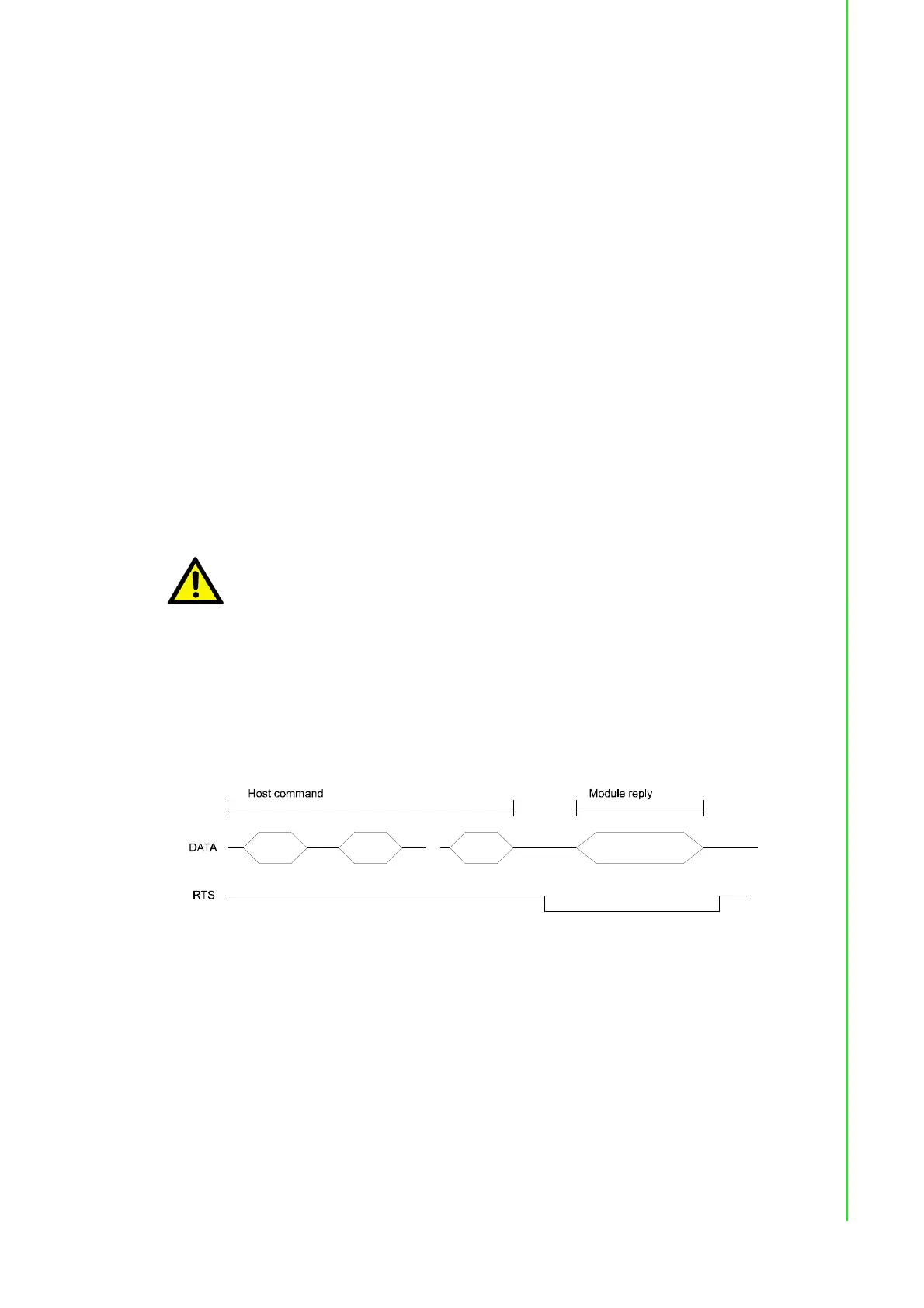353 ADAM-4000 Series User Manual
Appendix E RS-485 Network
Because each input is biased to 2.4 V, the nominal common mode voltage of bal-
anced RS-485 systems, the 18 k on the input can be taken as being in series
across the input of each individual receiver.
If thirty of these receivers are put closely together at the end of the transmission line,
they will tend to react as thirty 36k resistors in parallel with the termination resistor.
The overall effective resistance will need to be close to the characteristics of the line.
The effective parallel receiver resistance RP will therefore be equal to:
R
P
= 36 x 103/30 = 1200 W
While the termination receptor RT will equal:
R
T
= R
O
/ [1 - R
O
/R
P
]
Thus for a line with a characteristic impedance of 100 resistor, the termination
resistor RT should be:
R
T
= 100/[1 - 100/1200] = 110
Since this value lies within 10% of the line characteristic impedance.
Thus as already stated above the line termination resistor RT will normally equal the
characteristic impedance Z
O
.
The star connection causes a multitude of these discontinuities since there are sev-
eral transmission lines and is therefore not recommend.
E.4 RS-485 Data Flow Control
The RS-485 standard uses a single pair of wires to send and receive data. This line
sharing requires some method to control the direction of the data flow. RTS (Request
To Sent) and CTS (Clear To Sent) are the most commonly used method.
Figure E.6 RS-485 data flow control with RTS
Intelligent RS-485 Control
ADAM-4510 and ADAM-4520 are both equipped with an I/O circuit which can auto-
matically sense the direction of the data flow. No handshaking with the host (like
RTS, Request to Send) is necessary to receive data and forward it in the correct
direction. You can use any software written for half-duplex RS-232 with an ADAM
network without modification. The RS-485 control is completely transparent to the
user.
Caution! The recommended wiring method that causes a minimum amount of
reflection is daisy chaining where all receivers tap from one transmis-
sion line and needs to be terminated only twice.

